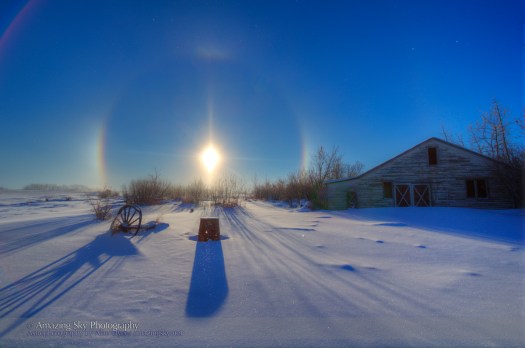A solar halo and sundogs surround the Sun on a cold winter day in Alberta.
I’m back home amid the snow and cold. The one celestial treat to such a clear but cold winter day is the appearance of sundogs and solar halos around the cold Sun.
This was this morning, with the low winter Sun above my snow-covered backyard, and the air filled with tiny ice crystals. You can see them as sparkly “stars” in the sky and in the foreground. Those crystals are refracting the sunlight and making the coloured “rainbows” on either side of the Sun called “parhelia” or sundogs. A faint halo encircles the Sun, topped by an upper tangent arc.
You can read more about halos and their origin at Les Cowley’s AtmosphericOptics website.
Here’s another view with a wider-angle lens. I’ve punched up the vibrance to bring out the fact that the shadows on such a day are not black or grey but blue, coloured by the intense blue light streaming down from the sky.
With these winter scenes, I wish all my blog fans and followers a very Merry Christmas, happy holidays and a very happy New Year. Clear skies to all in 2014!
– Alan, December 19, 2013 / © 2013 Alan Dyer




